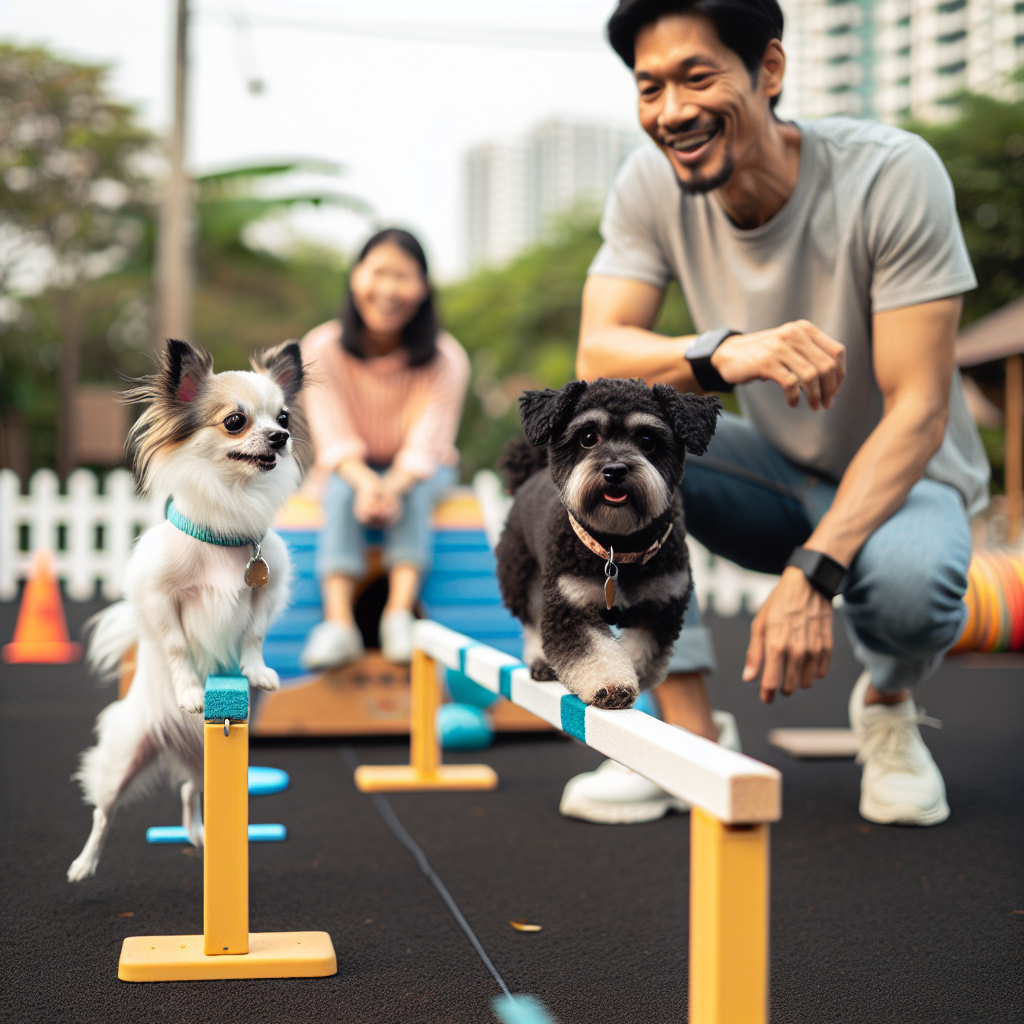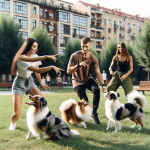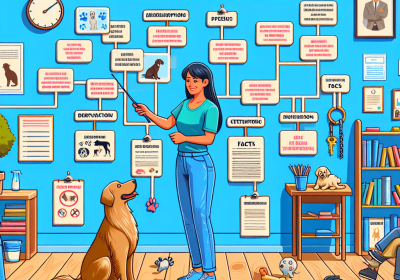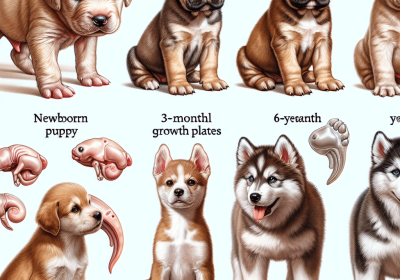Canine Freework for Small Breeds
Table of Contents
- Benefits Of Canine Freework For Small Breeds
- Essential Equipment For Effective Canine Freework Sessions
Canine Freework for Small Breeds is a specialized training and enrichment approach designed to cater to the unique physical and psychological needs of smaller dogs. This method emphasizes the importance of allowing dogs to engage in natural behaviors, such as sniffing, exploring, and problem-solving, in a controlled environment. By providing a variety of sensory and physical challenges, Canine Freework helps to build confidence, reduce stress, and improve overall well-being. It is particularly beneficial for small breeds, which may have different exercise and mental stimulation requirements compared to larger dogs. This approach not only enhances the bond between the dog and its owner but also promotes a more balanced and fulfilled life for the canine companion.
Essential Equipment For Small Breed Canine Freework
When engaging in canine freework with small breeds, it is essential to consider the specific equipment that will facilitate a safe and effective experience. Unlike their larger counterparts, small breeds have unique physical and psychological needs that must be addressed to ensure their well-being and optimal performance. Therefore, selecting the appropriate gear is paramount.
To begin with, a well-fitted harness is indispensable. Small breeds often have delicate necks and tracheas, making traditional collars potentially harmful. A harness distributes pressure more evenly across the chest and shoulders, reducing the risk of injury. When choosing a harness, look for one that is adjustable and padded to provide both comfort and security. Additionally, reflective materials can enhance visibility during low-light conditions, ensuring the safety of both the dog and the handler.
Equally important is the choice of a suitable leash. For small breeds, a lightweight, retractable leash can offer the freedom to explore while still maintaining control. However, it is crucial to ensure that the leash is sturdy enough to withstand sudden pulls or tugs. A leash with a comfortable handle can also prevent hand strain during extended freework sessions.
Moreover, interactive toys and puzzles are vital components of small breed canine freework. These tools not only stimulate the dog’s mind but also encourage physical activity. Toys that dispense treats can be particularly effective, as they combine mental challenges with positive reinforcement. When selecting toys, opt for those made from durable, non-toxic materials to ensure safety and longevity.
In addition to toys, agility equipment can significantly enhance the freework experience. Small breeds often excel in agility due to their nimbleness and quick reflexes. Equipment such as tunnels, weave poles, and small jumps can provide both physical exercise and mental stimulation. It is essential to choose equipment that is appropriately sized for small breeds to prevent any undue strain or injury.
Furthermore, a designated training area is beneficial for conducting freework sessions. This space should be free from distractions and hazards, allowing the dog to focus entirely on the tasks at hand. Soft flooring, such as rubber mats or grass, can provide a comfortable surface that reduces the risk of joint injuries. Additionally, having a variety of textures and surfaces can enhance sensory experiences, contributing to the dog’s overall development.
Hydration and nutrition are also critical considerations. Small breeds have faster metabolisms and may require more frequent hydration breaks. A portable water bottle with an attached bowl can be a convenient solution for on-the-go hydration. Similarly, high-quality, easily digestible treats can serve as effective rewards during training sessions. It is important to monitor the dog’s intake to prevent overfeeding, which can lead to weight gain and associated health issues.
Lastly, proper grooming tools should not be overlooked. Regular grooming is essential for maintaining the health and comfort of small breeds, particularly those with long or dense coats. Brushes, combs, and nail clippers designed specifically for small dogs can help keep their coats in optimal condition and prevent issues such as matting or overgrown nails.
In conclusion, the success of canine freework for small breeds hinges on the careful selection of appropriate equipment. From harnesses and leashes to interactive toys and agility gear, each item plays a crucial role in ensuring a safe, enjoyable, and productive experience. By addressing the unique needs of small breeds, handlers can foster a positive environment that promotes both physical and mental well-being.
Benefits Of Canine Freework For Small Breeds

Canine freework, a relatively new concept in the realm of dog training and enrichment, offers a multitude of benefits for small breeds. This approach, which emphasizes allowing dogs to explore and interact with their environment freely, can be particularly advantageous for smaller dogs, who often face unique challenges and needs. By understanding the specific benefits of canine freework for small breeds, owners can better appreciate the value of incorporating this practice into their pets’ routines.
One of the primary benefits of canine freework for small breeds is the enhancement of mental stimulation. Small dogs, like their larger counterparts, require mental engagement to prevent boredom and associated behavioral issues. Canine freework provides an opportunity for these dogs to use their senses, particularly their keen sense of smell, to investigate their surroundings. This sensory exploration can lead to increased cognitive function and overall mental well-being. Moreover, the freedom to choose their activities within a controlled environment can boost their confidence and independence, which is particularly important for small breeds that may often feel overwhelmed in larger, more chaotic settings.
In addition to mental stimulation, canine freework offers significant physical benefits. Small breeds, despite their size, need regular physical activity to maintain a healthy weight and muscle tone. Traditional exercise methods, such as long walks or vigorous play, may not always be suitable for smaller dogs due to their size and energy levels. Canine freework allows these dogs to engage in physical activity at their own pace, reducing the risk of overexertion or injury. This form of exercise can be particularly beneficial for older small dogs or those with health issues, as it provides a gentle yet effective way to keep them active.
Furthermore, canine freework can play a crucial role in addressing behavioral issues commonly seen in small breeds. Many small dogs exhibit behaviors such as excessive barking, anxiety, or aggression, often stemming from a lack of proper stimulation or socialization. By engaging in freework, these dogs can channel their energy into positive activities, reducing the likelihood of undesirable behaviors. The autonomy provided by freework can also help alleviate anxiety, as dogs learn to navigate their environment and make choices independently. This sense of control can be particularly empowering for small breeds, who may often feel vulnerable or threatened in their daily lives.
Another notable benefit of canine freework is the strengthening of the bond between the dog and its owner. This practice encourages owners to observe and understand their dogs’ preferences and behaviors, fostering a deeper connection and mutual respect. By participating in freework sessions together, owners can learn to communicate more effectively with their pets, leading to a more harmonious relationship. This enhanced bond can also improve the overall quality of life for both the dog and the owner, as they develop a greater sense of trust and companionship.
In conclusion, canine freework offers a range of benefits for small breeds, encompassing mental stimulation, physical activity, behavioral improvement, and strengthened human-animal bonds. By allowing small dogs to explore and interact with their environment freely, owners can provide a more enriching and fulfilling experience for their pets. As awareness of the advantages of canine freework continues to grow, it is likely that more small breed owners will incorporate this practice into their routines, ultimately enhancing the well-being of their beloved companions.
How To Incorporate Canine Freework Into Your Working Dog’s Routine
Incorporating canine freework into the routine of a working dog, particularly large breeds, can be a highly beneficial practice. This method not only enhances the physical well-being of the dog but also contributes significantly to its mental stimulation and overall happiness. To begin with, it is essential to understand what canine freework entails. Essentially, it is a form of enrichment that allows dogs to engage in natural behaviors such as sniffing, exploring, and problem-solving in a controlled environment. This practice can be particularly advantageous for large breeds, which often require more substantial physical and mental engagement due to their size and energy levels.
To effectively integrate canine freework into your working dog’s routine, it is crucial to start with a well-structured plan. Initially, identify a suitable environment where your dog can safely explore. This could be a spacious backyard, a designated area in a park, or even an indoor space equipped with various stimuli. The key is to ensure that the environment is secure and free from potential hazards. Once the location is determined, introduce a variety of objects and scents that can pique your dog’s curiosity. Items such as cardboard boxes, tunnels, and scent trails can be excellent tools for this purpose.
Transitioning from the setup to the actual practice, it is important to allow your dog to explore at its own pace. Unlike structured training sessions, canine freework should be more relaxed and less directive. This approach encourages the dog to use its senses and instincts, fostering a sense of independence and confidence. For large breeds, this can be particularly beneficial as it provides an outlet for their often high energy levels and need for mental stimulation. Additionally, incorporating freework into the daily routine can help alleviate any potential behavioral issues that may arise from boredom or lack of engagement.
As you continue to incorporate freework into your dog’s routine, it is essential to observe and adjust based on your dog’s responses. Pay attention to what types of activities and objects your dog seems to enjoy the most and tailor the sessions accordingly. This personalized approach ensures that the freework remains engaging and beneficial for your dog. Moreover, it is important to vary the activities and stimuli regularly to prevent monotony and maintain your dog’s interest.
In conjunction with the physical and mental benefits, canine freework can also strengthen the bond between you and your dog. By participating in these activities together, you create positive experiences and build trust. This can be particularly valuable for working dogs, as a strong bond with their handler is crucial for effective performance in their duties.
Furthermore, it is worth noting that while canine freework is highly beneficial, it should complement, not replace, other forms of training and exercise. Large breeds, in particular, require a balanced routine that includes structured training, physical exercise, and rest. By integrating freework into this balanced routine, you can ensure that your working dog remains healthy, happy, and well-rounded.
In conclusion, incorporating canine freework into the routine of a working dog, especially large breeds, offers numerous benefits. By providing a structured yet flexible environment for exploration and engagement, you can enhance your dog’s physical and mental well-being. Through careful observation and adjustment, you can tailor the freework sessions to suit your dog’s preferences, ensuring sustained interest and enjoyment. Ultimately, this practice not only enriches your dog’s life but also strengthens the bond between you and your canine companion.
Benefits Of Canine Freework For High-Energy Working Breeds
Canine Freework, a relatively new concept in the realm of dog training, has been gaining traction for its numerous benefits, particularly for high-energy working breeds. These breeds, which include Border Collies, German Shepherds, and Belgian Malinois, are known for their intelligence, stamina, and drive. They often require more mental and physical stimulation than the average pet dog. Canine Freework offers a unique approach to meeting these needs, providing a structured yet flexible framework that can significantly enhance the well-being of these energetic dogs.
One of the primary benefits of Canine Freework is its ability to provide mental stimulation. High-energy working breeds are not only physically active but also highly intelligent. They thrive on problem-solving and learning new tasks. Canine Freework involves setting up an environment where dogs can explore different textures, surfaces, and objects at their own pace. This kind of exploration engages their senses and encourages them to think critically, which can be incredibly satisfying for dogs that are naturally inclined to work and solve problems.
In addition to mental stimulation, Canine Freework offers substantial physical benefits. Working breeds often have high levels of energy that need to be expended to maintain their physical health and prevent behavioral issues. Traditional forms of exercise, such as running or playing fetch, are beneficial but can sometimes lead to repetitive strain injuries. Canine Freework, on the other hand, promotes varied movements and activities that can help build muscle tone, improve coordination, and enhance overall physical fitness. By navigating different obstacles and surfaces, dogs use a wider range of muscles and movements, which can contribute to a more balanced and healthy physique.
Moreover, Canine Freework can significantly improve a dog’s emotional well-being. High-energy working breeds are prone to stress and anxiety if their needs are not adequately met. The freedom to explore and make choices in a controlled environment can be incredibly empowering for these dogs. It allows them to express natural behaviors in a safe and structured way, which can lead to increased confidence and reduced anxiety. This sense of autonomy and control over their environment can be particularly beneficial for dogs that may be prone to stress or have had negative experiences in the past.
Another notable advantage of Canine Freework is its potential to strengthen the bond between dogs and their handlers. The activities involved require close observation and understanding of the dog’s behavior, which can enhance communication and trust. Handlers learn to read subtle cues and respond appropriately, fostering a deeper connection. This improved relationship can be particularly valuable for working breeds, which often have strong bonds with their handlers and thrive on positive interactions.
Furthermore, Canine Freework is highly adaptable and can be tailored to suit the individual needs of each dog. This flexibility makes it an excellent tool for addressing specific behavioral issues or training goals. For instance, a dog that is easily distracted or has difficulty focusing can benefit from the structured yet varied environment of Canine Freework, which can help improve concentration and impulse control. Similarly, dogs that are recovering from injury or illness can engage in low-impact activities that promote healing and rehabilitation without causing undue stress.
In conclusion, Canine Freework offers a multifaceted approach to enhancing the lives of high-energy working breeds. By providing mental stimulation, physical exercise, emotional enrichment, and opportunities for bonding, it addresses the unique needs of these intelligent and active dogs. As more handlers and trainers recognize its benefits, Canine Freework is likely to become an increasingly popular method for ensuring the well-being of working breeds, ultimately leading to happier, healthier, and more balanced dogs.
Essential Equipment For Effective Canine Freework Sessions
Canine freework, a versatile and enriching activity for dogs, has gained popularity among pet owners seeking to provide mental and physical stimulation for their furry companions. For small breeds, this practice can be particularly beneficial, offering an outlet for their energy and intelligence. To ensure effective canine freework sessions, it is essential to have the right equipment tailored to the needs of smaller dogs. This article will explore the necessary tools and accessories that can enhance the experience for both the dog and the handler.
First and foremost, selecting the appropriate harness is crucial. Unlike collars, harnesses distribute pressure evenly across a dog’s body, reducing the risk of injury, especially for small breeds with delicate necks and spines. A well-fitted harness should be comfortable, allowing for a full range of motion without causing chafing or restriction. Adjustable harnesses are ideal, as they can be customized to fit the unique body shape of each dog. Additionally, harnesses with reflective strips can enhance visibility during outdoor sessions, ensuring safety in low-light conditions.
Leashes are another fundamental piece of equipment for canine freework. For small breeds, a lightweight, durable leash is recommended. A leash that is too heavy can be cumbersome for a small dog, potentially hindering their movement and enjoyment. Retractable leashes offer flexibility, allowing the dog to explore their environment while still under control. However, it is important to use retractable leashes with caution, as they can pose a risk of entanglement or injury if not managed properly.
Incorporating a variety of toys and interactive tools can significantly enhance a canine freework session. Puzzle toys, for instance, are excellent for engaging a dog’s cognitive abilities. These toys often require the dog to solve a problem to access a treat, providing mental stimulation and encouraging problem-solving skills. For small breeds, it is important to choose puzzle toys that are appropriately sized and not too complex, ensuring that the dog can interact with them effectively.
Scent work is another valuable component of canine freework, and having the right equipment can facilitate this activity. Scent kits, which typically include a variety of scents and containers, can be used to create scent trails or hide-and-seek games. These kits help to engage a dog’s natural sniffing instincts, providing both mental and physical exercise. For small breeds, it is advisable to start with simple scent games and gradually increase the difficulty as the dog becomes more proficient.
In addition to toys and scent kits, agility equipment can be a fantastic addition to a canine freework session. Small-scale agility equipment, such as tunnels, weave poles, and small jumps, can be used to create an obstacle course tailored to the size and abilities of a small breed dog. This type of equipment not only provides physical exercise but also helps to build confidence and coordination. It is important to introduce agility equipment gradually, ensuring that the dog is comfortable and confident with each new element.
Finally, treats and rewards play a vital role in reinforcing positive behavior during canine freework sessions. High-value treats, which are particularly appealing to the dog, can be used to motivate and reward them for completing tasks or following commands. For small breeds, it is important to use appropriately sized treats to prevent overfeeding and ensure that the dog remains focused and engaged.
In conclusion, effective canine freework sessions for small breeds require a thoughtful selection of equipment that caters to their specific needs. By investing in the right harness, leash, toys, scent kits, agility equipment, and treats, pet owners can create a stimulating and enjoyable environment for their dogs. This not only enhances the dog’s physical and mental well-being but also strengthens the bond between the dog and their handler.
Read more about Canine Freework
Canine Freework Activities for Different Dog Breeds
– Canine Freework for Large Breeds
– Canine Freework for Small Breeds
– Canine Freework for Working Breeds
– Canine Freework for Companion Breeds
– Canine Freework for Specialized Breeds (e.g. Herding, Hunting)






![The Dog Podcast Uncovers Startling Truths About What We Feed Our Dogs [Press Release]](https://storyforge.com.au/wp-content/uploads/2024/08/dogfood-400x280.jpg)

